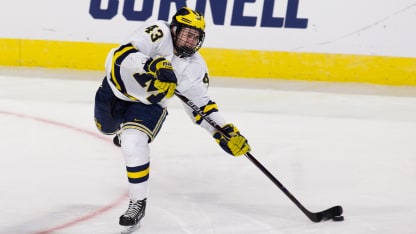With the 37th overall pick, the organization grabbed WHL defenceman Jett Woo from the Moose Jaw Warriors.
Woo started the WHL season with 17 points in his first 17 games before breaking his collarbone. He returned to the lineup and was asked to play the defensive safety net for their top 4.
He excelled in this role, using his physical play and unwillingness to give up the line to shutdown opponents. Although he ended the year with 25 points in 44 games, there is more offensive talent there. He ended with an expected goals per 60 of 0.57, which is a first pairing rate at the WHL level. He saw his ice-time climb as the season ended and the post-season began but the offence just wasn't piling up. He was averaging over twenty minutes a game in the playoffs for Moose Jaw but was limited to two goals and one assist.
If he had come a little closer to his early season rate, then his numbers would've seen an uptick. He was just a victim of circumstance after doing so many things right in the offensive zone.
His goals per game of 0.2 was tied for first in first time draft eligible defenders and his 0.57 points-per-game finished 5th in that same peer group. So despite struggling in the second half to generate points, looking at the totality of the season, he rated very well against his peers.
On the defensive side of the game, the data suggests that despite being constantly keyed on during transition play, Woo would shut down the attack before it reached the line. If they did penetrate the blueline, he was extremely efficient at getting the puck out of the zone through controlled exits.



















